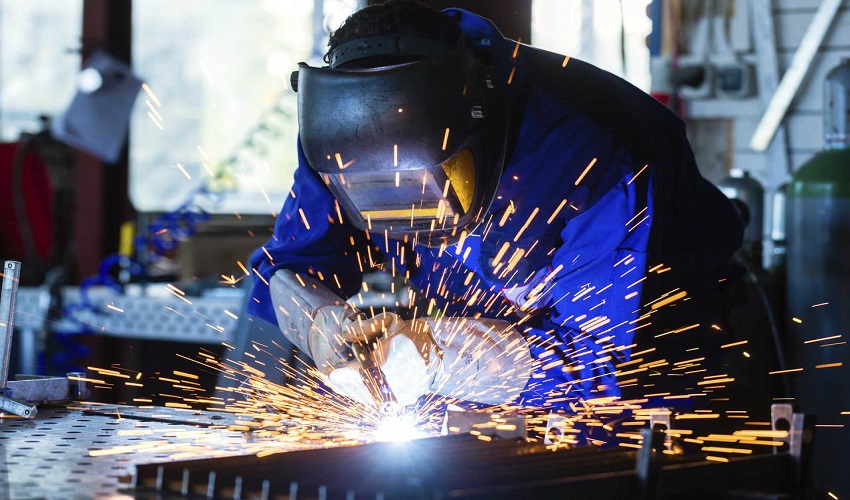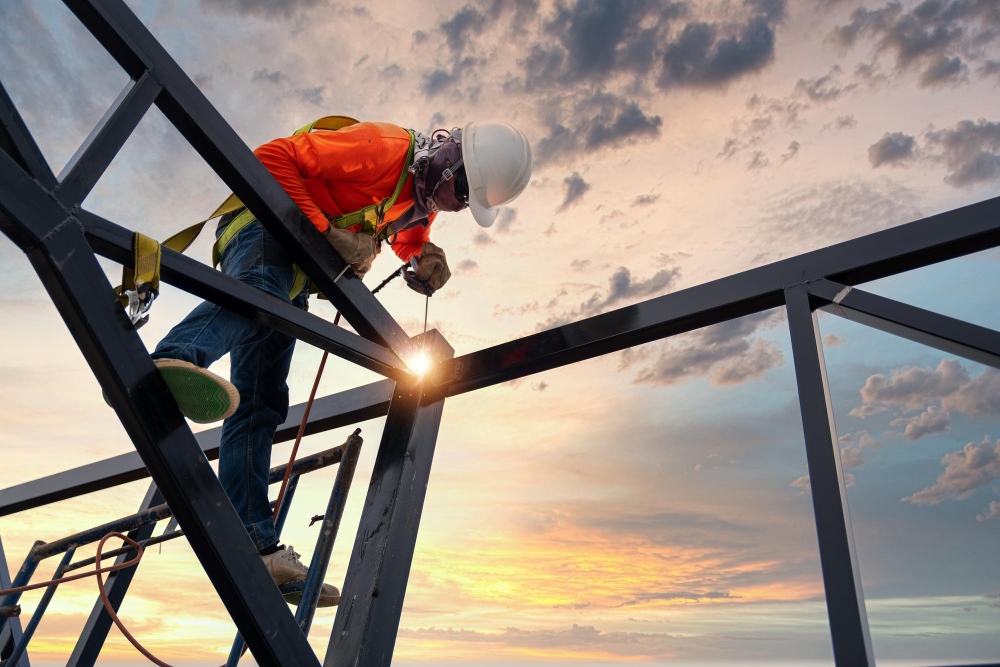The Ultimate Manual on Custom Steel Construction Solutions for Structural Projects
In the realm of architectural tasks, the value of customized steel manufacture services can not be overemphasized. From the foundational understanding of steel construction essentials to the intricate process of picking the most appropriate materials, every action in this journey plays a critical duty in the ultimate success of a job. As we browse via the complexities of style factors to consider, fabrication processes, and quality assurance measures, a detailed manual functions as a leading light for professionals seeking excellence in steel manufacture remedies. Stay tuned to discover the insights that can transform the method architectural tasks are come close to and executed.
Comprehending Customized Steel Construction Fundamentals
Digging into the fundamentals of customized steel fabrication provides understanding right into the elaborate process of changing raw steel into tailored structural components. Personalized steel manufacture is a customized production technique that involves cutting, shaping, and assembling steel products to develop special structures according to particular project needs. Comprehending the fundamentals of custom steel manufacture is critical for guaranteeing the effective implementation of structural projects.
The process usually begins with the analysis of job specifications and layout demands. This initial stage includes detailed preparation and partnership in between engineers, producers, and developers to identify one of the most suitable strategy for producing the steel parts. Precision is vital during the manufacture process, as also small inconsistencies can affect the architectural stability of the end product.
Different strategies, such as cutting, welding, and shaping, are used to transform raw steel into the wanted structural components. Proficient fabricators use innovative machinery and tools to make certain accuracy and consistency throughout the construction procedure. Quality control procedures are implemented to confirm the integrity of the made components before they are constructed on-site, ensuring compliance with market criteria and project specifications.
Choosing the Right Steel Materials

First and leading, the kind of structural project and its specific needs play a critical function in figuring out the most ideal steel materials. Aspects such as the load-bearing ability, environmental problems, and wanted life expectancy of the structure will certainly determine the grade and sort of steel that need to be made use of.
Moreover, the physical properties of the steel, consisting of ductility, toughness, and weldability, should align with the job's needs to ensure ideal performance and longevity (steel fabricators melbourne). In addition, considerations such as corrosion resistance, cost-effectiveness, and accessibility of the steel materials must also be thought about throughout the selection procedure
Design Considerations for Architectural Projects
Architectural projects require meticulous interest to make considerations to guarantee both capability and security are prioritized throughout the construction process. A number of vital factors should be taken right into account to assure the success of the endeavor when it comes to developing architectural tasks. The structural stability of the structure have to be a leading priority. This involves evaluating tons, stress and anxieties, and ecological factors to determine the most appropriate style that can hold up against numerous problems with time. Additionally, considerations for the functionality of the structure play an essential function in the style process. Comprehending the objective of the building and exactly how it will certainly be used assists in developing a style that makes the most of efficiency and usability. our website Including aspects that improve the visual appeals of the structure can further boost the total layout. Stabilizing appearance, capability, and security is important in developing successful architectural jobs that meet both sensible and visual needs. By meticulously taking into consideration these aspects throughout the design stage, designers and architects can make certain the structural task's success from conception to conclusion.
Improving Fabrication Processes for Performance

In addition, executing lean production concepts can substantially enhance efficiency in steel fabrication. By reducing waste, enhancing operations, and boosting communication between different teams included in the fabrication process, tasks can be finished much more quickly and with better standards.
Moreover, developing a well-organized production routine and workflow can assist in focusing on jobs, assigning resources efficiently, and conference task target dates promptly. By having a clear plan in position and on a regular basis monitoring progress, any potential traffic jams or delays can be identified and addressed quickly, making sure smooth and effective construction procedures for architectural jobs.
High Quality Control and Job Administration in Steel Construction
To make sure the successful implementation of steel fabrication projects, meticulous quality assurance measures and reliable task monitoring techniques are necessary elements in preserving precision and meeting customer assumptions. Quality control in steel fabrication involves strenuous assessments at different stages of the fabrication procedure to confirm compliance with project requirements and market requirements. This includes product testing, dimensional checks, and weld inspections to ensure structural honesty and safety and security.
Job management plays a critical function in coordinating the numerous elements of steel fabrication tasks, such as scheduling, resource allowance, and communication amongst employee. A well-defined project strategy with clear purposes, turning points, and timelines helps to keep an eye on progress and resolve any type of potential problems proactively. Effective interaction in between all stakeholders, including customers, engineers, fabricators, and contractors, is essential for guaranteeing that the task progresses efficiently and fulfills the desired high quality criteria.
Conclusion
Finally, personalized steel fabrication plays a vital duty in structural jobs by supplying customized solutions making use of the best products and layout factors to consider. Effectiveness in fabrication processes, high quality control, and reliable task management are vital for effective results. By recognizing the essentials of custom steel fabrication and carrying out structured procedures, task groups can supply long lasting and top notch frameworks that satisfy the certain demands of their customers.
Custom-made steel manufacture is a customized manufacturing strategy that entails cutting, shaping, and constructing steel products to develop one-of-a-kind frameworks according to certain job demands.To why not look here guarantee the successful execution of steel manufacture tasks, careful high quality control steps and effective project management practices are important components in keeping accuracy and meeting client assumptions. Quality control in steel construction involves rigorous examinations at different stages of the fabrication procedure to validate conformity with project requirements and sector requirements (steel fabrication melbourne).Project monitoring plays a critical function in coordinating the numerous elements of steel manufacture find out here now jobs, such as scheduling, source allotment, and interaction among team participants.In final thought, custom steel manufacture plays an important role in structural projects by supplying tailored options using the ideal materials and style factors to consider